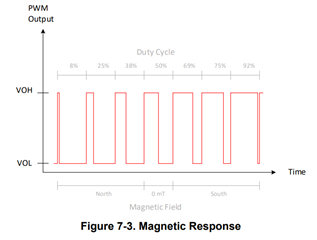Other Parts Discussed in Thread: DRV5057
Hello,
I am developing a brake system.
I am going to make a product that outputs a brake signal using a magnet and a hall sensor.
I am going to make a brake product that is resistant to heat.
However, while reading the datasheet, I have a question.
In the picture, it is indicated that the compatibility with nickel and cobalt is not good.

I was going to use the DRV5057-Q1 with Alnico magnet.
Can't Alnico magnets be used as indicated on the datasheet?
Does the DRV5057-Q1 calibrate even if the magnet density is changed?
There shouldn't be a problem because accuracy and reliability are so important.
Please let me know if what I understand is correct.
Regards,


